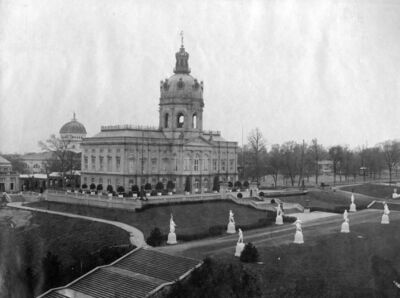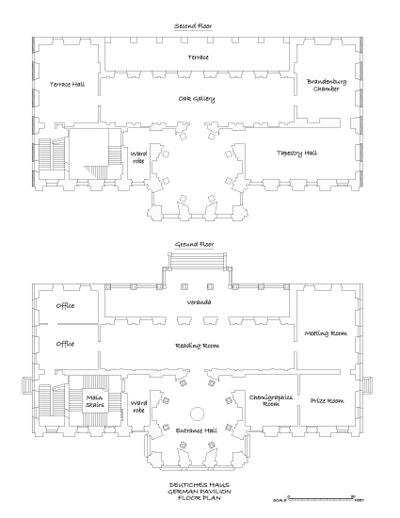Germany: Difference between revisions
No edit summary |
No edit summary |
||
| Line 18: | Line 18: | ||
| child_entry = | | child_entry = | ||
| opening_day = | | opening_day = | ||
| dedication_day = | | dedication_day = May 5, 1904 | ||
| special_day = | | special_day = | ||
| other = | | other = | ||
| floorplan_image = FP-Germany.jpg | |||
| ticket_image = | |||
}} | }} | ||
| Line 38: | Line 40: | ||
Of note was a 200 pound silver table ornament in the shape of a sailing vessel. | Of note was a 200 pound silver table ornament in the shape of a sailing vessel. | ||
Many of the artifacts and works of art were then owned by the Emperor, and had been in the possession of his family for hundreds of years. There were an excellent collection of artistic jewelry and medals of great value, and the wood work and hangings of all the rooms were notable. | Many of the artifacts and works of art were then owned by the Emperor, and had been in the possession of his family for hundreds of years. There were an excellent collection of artistic jewelry and medals of great value, and the wood work and hangings of all the rooms were notable. | ||
Revision as of 07:33, 13 January 2024
 | |
| Location | Art Hill |
|---|---|
| No. of Buildings | 1 |
| Dates | |
| Dedication Day | May 5, 1904 |
| Architecture | |
 | |
Germany's National Pavilion overlooked the Main Picture of the World's Fair and was designed by Emperor William to represent Imperial Germany at the World's Fair.
Etymology
Before the Fair
The structure was a partial reproduction of a building renowned in German history as the Schloss (Castle) at Charlottenburg, near Berlin. The castle was built near the end of the seventeenth century by Frederick I., the first King of Prussia. It was designed by Andreas Schlueter, the great German architect in the 16th century.
Description
The main facade of the German Pavilion was in two stories. In the center, over the main entrance, towering 150 feet skyward, was an enormous stilted dome. Surrounding the building were copies of the famous gardens of Charlottenburg Castle, from which plants were taken by the landscape artists to make the likeness more real. A set of chimes, striking the hours in the great tower, served to attract the visitor to the impressiveness of the German Palace.
The building was open to the public only by invitation.
Inside, the rooms contained many items and furniture from the original castle. Rooms in the pavilion were furnished with precious old furniture, gobelins (tapestries), and silver ornaments.
Of note was a 200 pound silver table ornament in the shape of a sailing vessel.
Many of the artifacts and works of art were then owned by the Emperor, and had been in the possession of his family for hundreds of years. There were an excellent collection of artistic jewelry and medals of great value, and the wood work and hangings of all the rooms were notable.
